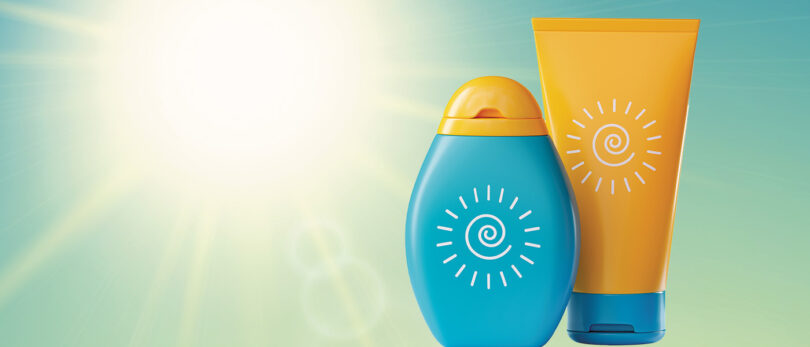Understanding the risks and dispelling myths can help protect you from long-term damage
The increase in outdoor activities this season brings an additional risk of sun damage. Online, we are overwhelmed with so much sun safety information (some of it inaccurate) that it can be challenging to know what’s best for our skin.
Dispelling myths
It can be hard to distinguish which sunscreen is the best option, especially when many boast additional benefits, says Dr. Sienkiewicz.
“Inexpensive products usually have the same active ingredients as expensive ones,” he adds. “Added botanicals and antioxidants do not give more protection. I would recommend using a stronger cosmetically elegant product for the face, ears and neck and a less expensive one for the rest of the body.”
MYTH: SUNSCREEN IS TOXIC
While Dr. Sienkiewicz does recommend mineral sunscreens for people with chemical sensitivities, kids, infants and pregnant women, “no one has documented any health, fertility or endocrine effects or anything else from absorption of sunscreens,” he says.
Ultimately, ultraviolet rays are more toxic than the chemicals in sunscreen. Over a lifetime, the benefits of sunscreen far outweigh the risk of skin cancer.
MYTH: SUNSCREEN INHIBITS VITAMIN D PRODUCTION
Sunshine on the skin provides health benefits—it stimulates the production of vitamin D. But you don’t have to worry about sunscreen preventing that. The only people who truly have to worry may have impaired vitamin D production or absolute sun intolerance, Dr. Sienkiewicz says.
MYTH: TANNING BEDS CAN PROTECT YOU FROM BURNS
While it is true that when the skin tans, it can help protect you from a more severe sunburn injury, this only holds true for natural tans. Are you considering tanning beds to get a base tan before going on vacation? Dr. Sienkiewicz says a tanning bed is less likely to protect you and recommends saving your money.
However, understanding sun safety can be lifesaving. “The latency period between sun exposure and skin cancer is 30 to 40 years. So many people get most of their sun damage by age 20. And they start getting skin cancer when they’re 50 to 70,” says Genadij Sienkiewicz, MD, a dermatologist at UHS.
“Cumulative exposure to sunburns over a lifetime can be particularly bad. For melanoma, childhood sunburns are the worst.”
Dr. Sienkiewicz recommends the following:
- Cover up. “Avoid intentional sunbathing, especially during peak hours, and cover up as much as you reasonably can while still being comfortable,” says Dr. Sienkiewicz.
- Apply sunscreen liberally. Putting on a more generous amount of sunscreen improves protection more than using a very high SPF product. The minimum SPF to use is 30. Reapply in a few hours if swimming or sweating heavily.
- Get skin checks. “People are generally unaware of the signs of skin cancer and the potential problems.” Dr. Sienkiewicz says people with pale skin, a family history of skin cancer, frequent sunburns or freckles should especially look into yearly skin checks.
GET CHECKED
Schedule your annual skin check with UHS Dermatology today at nyuhs.org/care-treatment/dermatology. For more information, visit the American Academy of Dermatology at aad.org.







